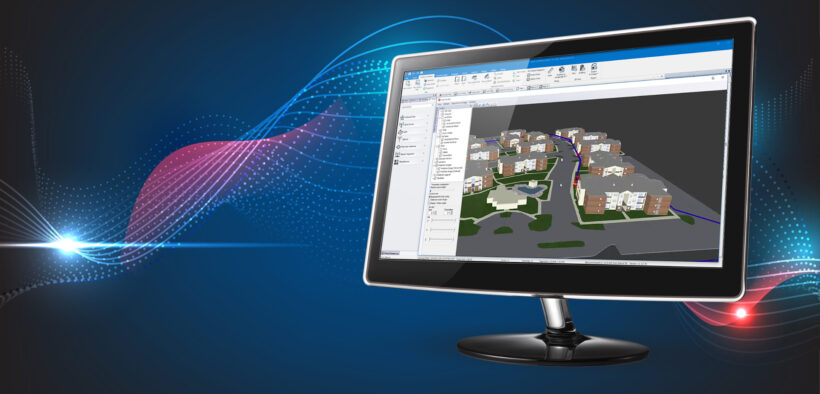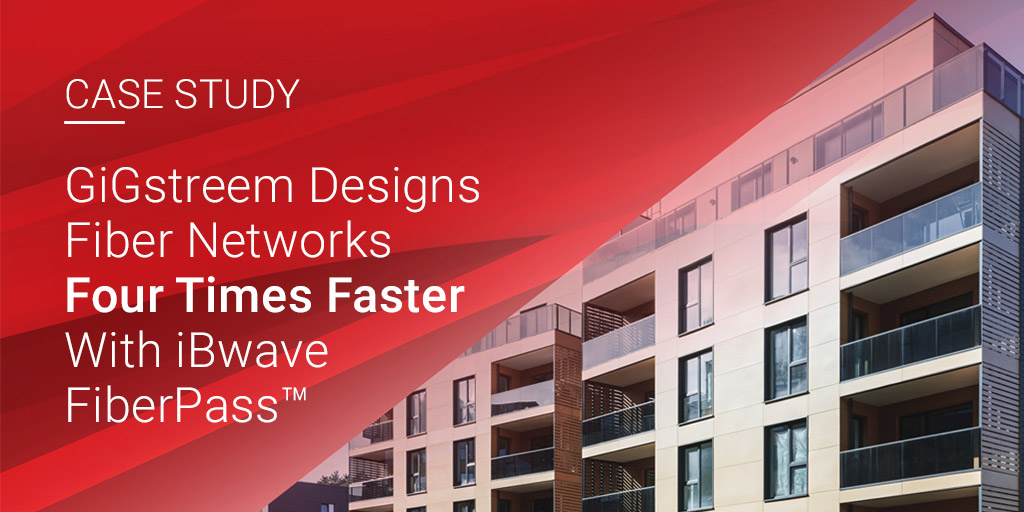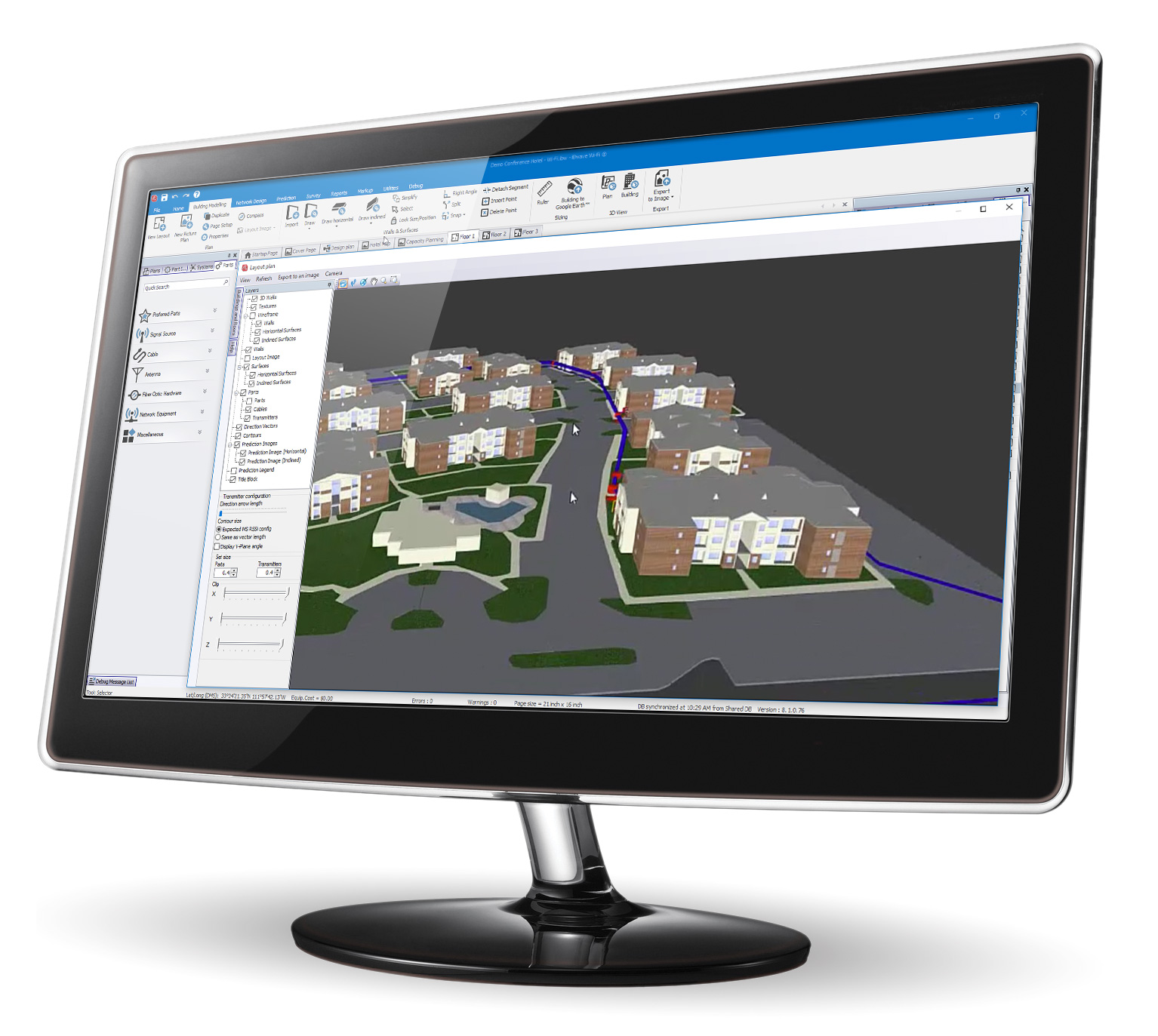How to Save Time and Costs on Fiber Network Deployments
Share

The fiber network deployment process can be complex, with many steps involved, each of which must be completed accurately. Initial surveys must fully capture the nature of the deployment scenario. The design process must account for all the variables involved while also leveraging the data gathered from the survey process. Design software must be easy-to-use to minimize unnecessary complications that can introduce errors during the design process. And comprehensive reporting is needed to ensure all relevant stakeholders have access to clear and concise information in their respective domains.
This often requires multiple tools to work alongside one another, each of which must both perform its role well and interact with the other tools effectively. Survey data must be transferred to design software, design software must be able to easily make use of that data, and network designers must be able to access the correct version of the design in progress.
Our recent case study with GiGstreem demonstrates the power of having intuitive, powerful survey and design tools connected via cloud-based solutions. GiGstreem was able to use iBwave FiberPass, as well as iBwave FiberPass Mobile and iBwave Unity to optimize the network design process for multi-dwelling units (MDUs).
1. Survey Networks Accurately and Document Your Site
The first step of fiber deployment is almost always a network survey and site documentation. Accuracy is critical in this step, as the measurements taken here will inform the rest of the design process. This can mean the difference between overdesign, which adds additional unnecessary costs, and under design, which can compromise a network’s efficiency, possibly requiring later correction at extra cost.
GiGstreem’s former software required technicians to take manual measurements. As a result, they often overestimated requirements such as length of cable to ensure they would have enough when actually installing the infrastructure.
With iBwave FiberPass Mobile, technicians can easily capture accurate measurements with guided, standardized in-building and outdoor site surveys, eliminating the need to compensate for approximate survey values.
2. Use Comprehensive and Efficient Design Software
Once the site has been surveyed and measurements taken, that data must be fed into design software. Inefficiency in the design process can cause many more issues than one might presume.
Inefficient design software slows the network design process and can also introduce errors by creating a need for more designers working on multiple design versions for the same project. This leads to a greater risk of confusion, which creates a major risk that a client could be sent an unfinished version of a design. It also reduces the amount of time available for review and slows the review process, increasing the risk that mistakes end up in finished versions.
iBwave FiberPass uses standardized versions of designs, greatly accelerating the design process and reducing the number of designers needed. This not only accelerates the design process but also the review process. With much more time available for comprehensive reviews, and standardized versions making the review process easier and more accurate, the risk of errors ending up in final versions is greatly reduced.
You can now also significantly simplify and accelerate building modelling in iBwave FiberPass with our new Stencil Library. Stencil Library is a collection of user-defined templates, or stencils, of frequently used markups, images, 3D materials and objects. You can quickly create stencils from single objects, such as living units, polygons, walls, surfaces or stairways, to multiple selections and complex 3D objects. Learn more here.
3. Use Comprehensive and Stakeholder-Tailored Reports
After the network has been surveyed and designed, reports must be generated for approval by various stakeholders. For example:
Handoffs, in particular, can be challenging. In GiGstreem’s case, because the previous software its designers were using lacked standardized reports, handoffs could require days of extensive consultation. Each design was unique, and the rationale for differing design structures had to be explained.
Standardized design formats and structures in iBwave FiberPass eliminate these delays, reducing the time needed for handoffs and minimizing the risk of misunderstandings that can lead to errors. And with the ability to generate comprehensive but specific reports, the approval and review process is faster and more efficient.
4. Manage Ongoing Maintenance and Operations
Establishing a fiber network isn’t a one-and-done procedure. Once put in place, networks require ongoing maintenance and management. Technicians need to troubleshoot network issues as they happen, which requires an understanding of the network layout to help identify where and how connectivity problems have arisen. Not only does this require comprehensive records of site layout and design, but technicians need this information to be clear, coherent, and accessible to make effective use of it.
This applies equally for future network upgrades. Without a comprehensive understanding of the network, attempting an upgrade can be a costly, complex, and tedious task.
By taking advantage of iBwave Unity and iBwave FiberPass Mobile, GiGstreem technicians were able to troubleshoot their network easily and efficiently, as well as plan for future network upgrades. Easy access to centralized documentation, as well as automatic population of project data from design files, made it straightforward to assess the network at a glance and easily identify pain points. Previously, this would have required trial-and-error investigation. The ability to access and reference designs on-site made real-time analysis easier and more efficient, and easy collaboration and file-sharing ensured that on-site and off-site teams were able to coordinate their efforts.

5. Capitalize on Effective Collaboration and Information Sharing
From the very beginning to the end of a fiber network design and deployment process, collaboration and efficient information sharing is crucial. Surveys must be accessible to designers, and ideally this access should be seamless. Manual data entry is both tedious and error-prone, which highlights the importance of automatic data transfer and points to the need for synchronicity in tools.
As network design and installation is an ongoing process, it’s important for data to efficiently flow both ways. Initial surveys must be accessible during design, but the most recent designs must be easily and efficiently accessible for later network validation, maintenance, or upgrades.
iBwave Enhances Every Step Along the Way
With iBwave FiberPass, FiberPass Mobile, and iBwave Unity, every step of the design and deployment process is supported.
With iBwave Unity, our cloud-connected collaboration tool for both wired and wireless projects, fiber network designers can efficiently move projects through the survey, design, validation, and maintenance process while minimizing the risk of errors being introduced.
Instant synchronization between iBwave FiberPass Mobile and iBwave FiberPass ensures that every technician, whether surveying or installing, and every designer is working with the most recent and complete version of the design. By eliminating manual data transcription, iBwave Unity reduces the chances of introducing human error or introducing errors via delay, and minimizes costly and time-consuming busywork.
To find out how FiberPass enhanced GiGstreem’s fiber network design process and improved its efficiency and accuracy, check out our case study.



















